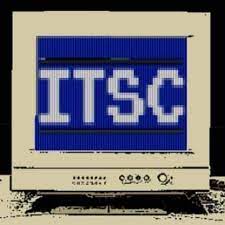If you’re an MSP managing Microsoft Teams for clients, you know how quickly firefighting support models burn out margins. Tickets flood in, investigations drag on, clients get frustrated, and gravity often pulls support operations toward Microsoft escalations. Kevin Kieller, Lead Analyst at Enable UC, handcrafted a model to map this dynamic and the advantages of flipping it.
The model’s results are strikingly unambiguous: proactive monitoring and advanced diagnostics, as found in Martello’s Vantage DX solution, are tangibly transformative rather than nice-to-have add-ons.
Enable UC found that for MSPs deploying these capabilities, it is reasonable to expect a 50 percent reduction in labor required for incident management, more than 40 percent fewer user-impacting Teams issues, and about 20 percent fewer escalations to Microsoft. These cost model stats illustrate the impact of foresight over firefighting.
- Fixing Hybrid Collaboration: Martello’s Vantage DX for Microsoft Teams & Zoom
- Big UC Update: Martello
Why Traditional MSP Support Struggles, and How to Fix It
Most MSPs run Teams-managed services in reactive mode. When a user complains, a ticket opens, and the MSP scrambles to identify the pain point. Native Microsoft visibility often arrives too late in the form of logs that require close interpretation but lack clarity on root causes. By then, clients are unhappy, and escalations loom.
Proactive monitoring disrupts that narrative. With synthetic transaction monitoring that mimics Teams activity, like join-meeting clicks or file sharing across networks, your support team gains early visibility into degrading conditions. Look at it like the difference between watching fuel gauges fill up versus waiting for the engine to sputter.
Root cause analysis and network path tracing can diagnose and isolate the issue, whether it’s carrier SIP trunk performance, SBC glitches, or Microsoft service slowness, long before users raise tickets. Client trust stays intact, and support becomes about intelligence, not inertia.
What Vantage DX Brings to Your MSP Toolbox
Vantage DX was built for MSPs who manage clients’ Microsoft Teams environments at scale. Its dashboards let you monitor performance across customers simultaneously, filtering issues by individual clients, geographic locations, or specific VIP groups – any area that is key to you and your clients. When a performance alert triggers, support teams can diagnose and respond with precision and retain visibility into all service layers.
The platform also offers outage early warning: detecting Microsoft outages up to an hour before Microsoft’s own acknowledgement, and showing which specific sites are impacted. This enables timely client comms and pre-emptive planning, avoiding the traditional deluge of user-generated support tickets.
Put straightforwardly, Vantage DX turns unknown unknowns into known knowns. In practice, that means your team spends less time patching fires and more time building client relationships and delivering practical value.
The Model in Motion: How MSPs Win Big with Proactive Support
Enable UC’s KPIs are grounded in interviews with MSPs, documented incident data, and conservative modeling assumptions.
Kevin Kieller noted: “In total, our model indicates that over 40 percent of potential issues could be mitigated with proactive monitoring.” That’s nearly half the issues kept out of the ticket queue.
Kieller also underscored how proactive monitoring and advanced diagnostic tools drive dual benefits, in that they “reduce operational costs while simultaneously increasing ongoing revenue, through upsell opportunities and by reducing churn.”
Additionally, MSPs who deploy these tools can expect a 50 percent reduction in labor required for incident management, over 40 percent fewer issues, and 20 percent fewer escalations to Microsoft.
Add in a 5–10 percent boost in CSAT or NPS, 10 percent upsell potential, and a 25 percent reduction in SLA penalties, and suddenly this evolves into a strategic shift in your business model driven by tangible business value, rather than basic support optimization.
What happens when support headcount drops and issue volume falls? Margin improves, customer churn decreases, strategic services can scale, and customer confidence rises.
Want to Stop Firefighting and Start Strategic Foresight?
MSPs delivering Microsoft Teams support face ever-growing and precise client expectations, from high performance and proactive comms to fast diagnostics and minimal escalations. Waiting for users to complain is a critical liability, not a proactive strategy.
Martello’s Vantage DX, fortified with Enable UC’s independent MSP cost model, outlines a proven path forward: prevent two-fifths of Teams issues, cut incident labor in half, reduce Microsoft escalations by a fifth, and elevate satisfaction and upsell opportunity.
Rather than just reacting, MSPs can become their very own architects of performance, resilience, and profitability.
Visit here to find out more, request a demo of Vantage DX, and discover how proactive monitoring can reset your MSP business model.
This post originally appeared on Service Management - Enterprise - Channel News - UC Today.
